In San Francisco Burner circles, close to the source, I often hear the Burner’s Dream expressed thusly: Our dream is to bring the principles we embody out on the playa back to the default world.
We want to be as awesome as we are at Burning Man all the time, and we want our cities and towns and neighborhoods to be that awesome as well.
This June, a bunch of San Francisco Burners fell into the opportunity to take over a 14,000-square-foot SOMA warehouse for $1 and turn it into [freespace], a three-story blank canvas for artists, hackers, farmers, builders, and whoever else wanders in, meant to be a staging ground for inspired experiments in hacking on the meaning of urban space.
Sounds like that Burner’s Dream come to life, right? Naturally, Burning Man got involved. But what does that even mean? Who is this “Burning Man?” Is it the Burning Man organization? is it the fledgling non-profit Burning Man Project? Is it Burning Man participants acting of their own accord?
Yes.
Who is Burning Man?
In the first week of [freespace], the relationship with Burning Man centered around BurnerHack, an open-ended event from June 7–9 intended to let Burners take advantage of the [freespace] facilities to build things bound for the playa.
It was organized by Micah Daigle, a Burner who travels in circles close to the Org, but who isn’t officially involved. He’s a participant. He’s also one of the creators of BurnerMap, a Facebook app that allows you to create and print maps of where your friends are camping, and arguably one of the most successful participant-driven Burning Man projects in the event’s history.
BurnerMap has tens of thousands of users. It’s a participant-driven project on the scale of the whole event itself. And yet the Org is not involved. That can make the relationship weird at times. That weirdness extends to physical events like BurnerHack, and even to independent cultural movements like [freespace] itself.
And as Burning Man tries to grow into a year-round culture, we have to figure it out.
Leaders or catalysts
“Nobody is in charge here, especially me,” Micah said from atop his co-BurnerMapper, Morgan’s shoulders at the opening gathering of BurnerHack Friday night. After making that clear, he opened up the floor for participants to present their BurnerHack projects.
It quickly became clear that this was a teach-in, not just a hackathon. The initial pitches include EL wire soldering lessons, Arduino and LED programming lessons, and trucker hitch tying lessons.
There were also plenty of art projects in which to participate. GPS-guided drones to deliver 3 lb. payloads to locations on the playa! A double-decker tortoise mutant vehicle! A deep playa light and sound installation that uses a Kinect for motion sensing! Autonomous, immersive jellyfish blooms! All that good stuff.
Others were working on resources. Jaki proposed to build a tool to let theme camps easily build nice websites. Grant wanted to offer to make the Hexayurt website more useful and informative. Micah hoped to get cranking on OpenPlaya, a wiki knowledge base for Burning Man. He and Morgan also planned to hack on BurnerMap.
Emergent properties
BurnerMap emerged as if out of necessity to help with one clear problem: the logistical boondoggle of finding people on the playa. Someone had to built it, so Micah and Morgan just up and did.
There are two clear drawbacks to such a technology, though. One is the threat to the principle of Immediacy; who wants to think about Facebook on the playa? The other is the more fundamental change it presents to Burning Man; we used to have to just rough it out there, but now we can use the Internet to make neat little maps. Hardcore drive-by-shooting-range Burners might argue that BurnerMap softens us up.
But Morgan and Micah intentionally stopped short of building overly techy, immediacy-killing tools like the smartphone apps people have intended for use on the playa. BurnerMap is a pre-playa tool. “I like that it’s just a piece of paper once I get there,” Morgan says. They crafted BurnerMap carefully to enhance the Burning Man experience without interfering with it.
Nevertheless, the bottom-up nature of BurnerMap has bumped into the Burning Man Organization before. Earlier in BurnerMap’s history, as lots of people started to sign up for the first time, a significant number of them started putting fake playa addresses on there, making the map untrustworthy enough that Burning Man’s camp placement team got involved. BurnerMap started off fine without Org involvement, but as it got to scale, they had to add a disclaimer.
And when BurnerMap has reached out to the Org for help, asking to pre-fill the map with official placement data, for instance, the efforts have fizzled out. Priorities are so different on either side of the bottom-up, top-down divide that it can hinder collaboration.
Do BurnerMap’s creators want a closer relationship with the Org? “It doesn’t make a huge difference,” Morgan says. Micah feels similarly about the Org’s desire to be involved with BurnerHack itself. They have supported BurnerHack completely and in essential ways. But at times, it felt like the Org had to be involved. After all, they are Burning Man. Or are they?
“We need the Org for Burning Man to exist,” Micah says, “but is it Burning Man? No. Burning Man is an emergent event.”
Burning Man’s project
The challenge of figuring out how capital-B Burning Man can be productively involved with emergent events like BurnerHack and [freespace] is the domain of the Burning Man Project, the new, nonprofit side of the Org that aims to be the future of year-round Burning Man culture.
Its representative most involved with [freespace] is James Hanusa, who is responsible for the Project’s new initiatives. He knows the [freespace] organizers and believes in them, and he was Micah’s closest point of contact in the planning of BurnerHack. He knows the Project should support initiatives like these, but he says, “We’re still figuring out how.”
The will is there, but the way is not yet clear. The Burning Man Project is busy enough figuring out its own job, so working with spontaneously organized participants is yet another step ahead. But clearly, with its non-hierarchical, gift-driven, art-centric culture, [freespace] looks like a prototype for the kinds of spaces that can promote Burning Man culture year-round and in the default world.
“It’s kind of like Burning Man, but you replace the trash fence with walls,” James says. “If we’re here, and we’re Burning Man, we need to support this type of activity if we are really going to be about helping bring positive change to the world through our principles, our ethos, and our culture.”
“The difference is that it’s in the city, in a neighborhood that’s challenged by a lot of things.” And that difference is crucial. It’s easy to live up to the principles when everyone around you is, too. But in the middle of a depressed area of a big city, hanging out in a vast warehouse, surrounded by people who desperately need a place to sleep? That’s no sunrise on the playa. How does Burning Man culture address the real world?
Always be undulating
Rob, the guy who brought the jellyfish blooms, was the one to test that question at BurnerHack. On Friday night, he busted out his tall, hand-held, illuminated jellies, and he taught a bloom of us how to operate them believably. Then he proposed we take them for a walk around SoMa.
“Always be undulating,” he reminded us as we headed down the street.
We undulated down Mission Street and up towards Market, gliding past the heavy road construction, swarming the parked police cars, swimming by City Hall, wandering through fast food joints and down into BART stations.
Surely, on the playa, this would be effortless. In the city, it was a little hard to stay in it, and the temptation to snap pictures and share them on the Internet was pretty strong for some of us. But the Burner spirit was with us the whole time. We were making a scene.
People kept asking us “why.” “Why? Why are you doing this? What is it for?” That seemed to be a default-world question. No one asks that on the playa.
But like good Burners, we adapted. When asked, “What’s it for?”, one jellyfish close to the situation quickly replied, “It’s for you,” and the man who asked cracked a smile.
“Who are you guys?”, another bystander asked.
“We’re out of [freespace],” one jellyfish replied, and he proceeded to explain and invite her to visit.
Our jellyfish bloom changed some people’s night in the city. Of all the art and talk and planning at BurnerHack this weekend, this weird walk around the neighborhood was the most Burnery part. And I don’t think it was the values that did it. I think it was the smiles.
I think the Burner’s Dream is actually one level down from spreading all these principles and practices. What we want is to be moved by every smile, every greeting, every sip of water and bite of food, every trip to the potty, and every sunset.
On the playa, we are moved constantly. In the city, we are hardened. But, in this fitful, flawed way, Burning Man is opening us up.
Want to be a part of [freespace]? It’s open all month. There’s an art opening for the 20 amazing murals there tonight (June 11) from 6:00-9:00. You should check it out!
While we’re at it, if you enjoy the presence of the Billion Jelly Bloom, you can like it on Facebook and back it on Kickstarter.

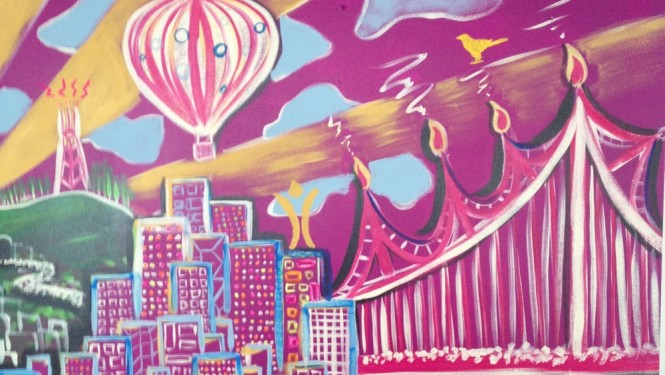
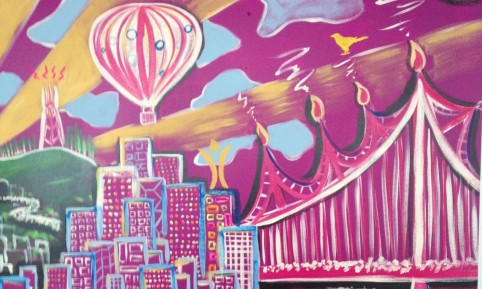
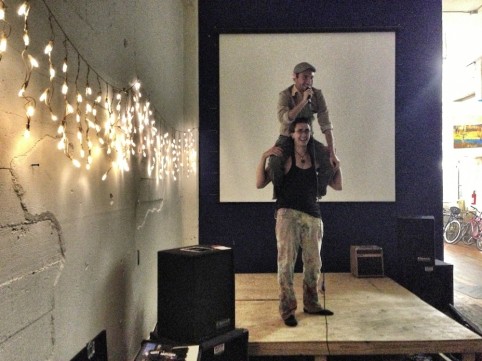
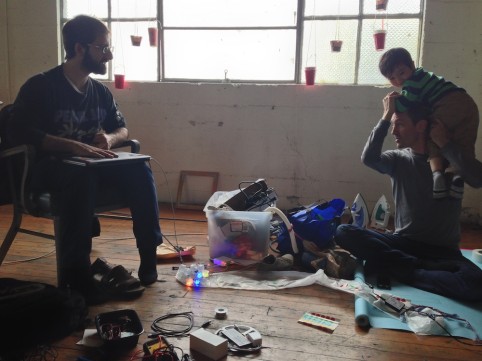
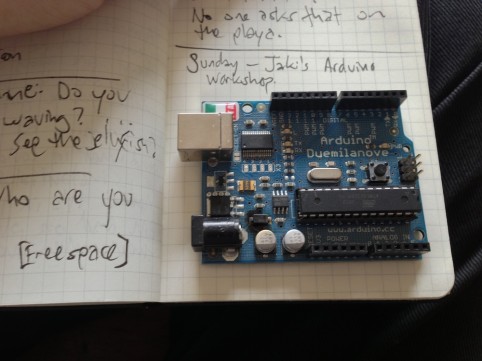
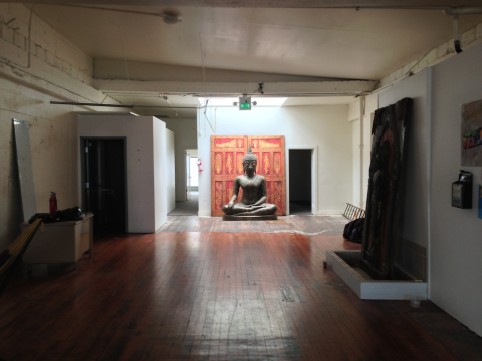
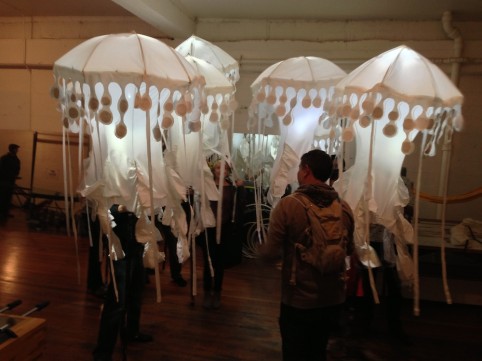
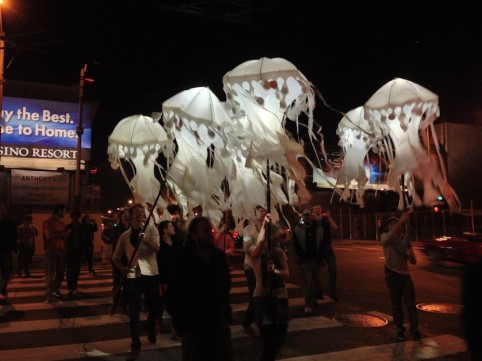
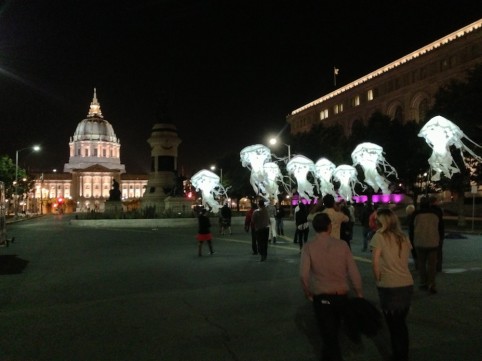
Thanks for reading, my people. If you like what you hear here, you should check out The Daily Portal ๛, my home publication. You can also get bite-sized ideas on Twitter @ablaze. And feel free to write me a note.
Have you been out to [freespace] yet? Any impressions you’d like to share?
Report comment
Love this post! I have been to two burns now and I think you have hit the nail on the head for me in a couple of places. At the burn everything really does move you. People coming together so easily and in different ways than you are used to seeing makes even the environment seem more inviting.
I just wrote a bit about what if society was run by the ten burning principles and would love for you to check it out if you want! http://www.favorfreedom.com/2013/06/if-society-was-run-according-to-ten.html
Report comment
Comments are closed.